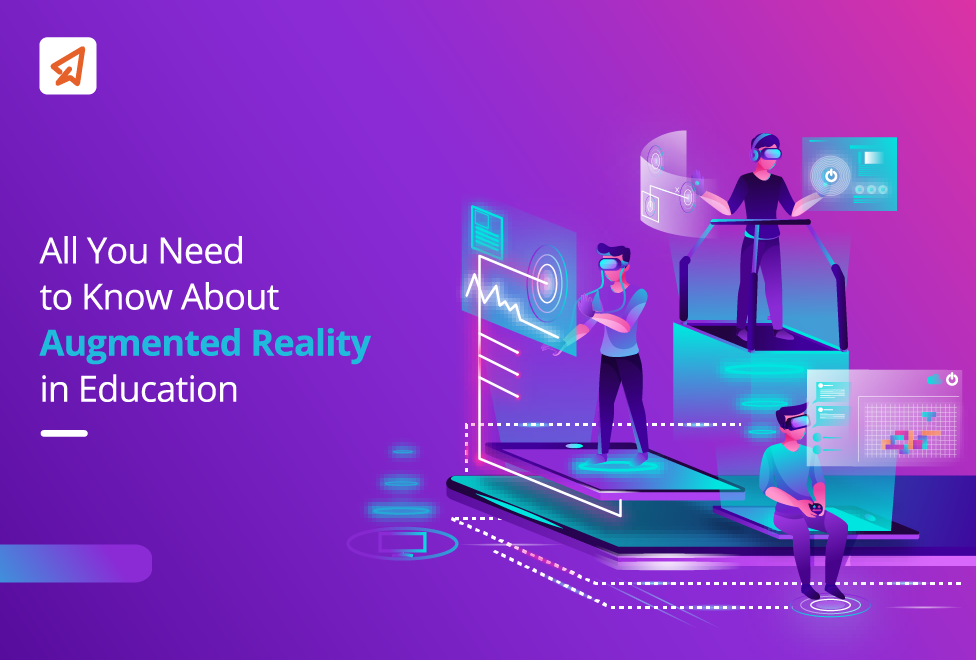How AI Can Transform Personalised Learning Under NEP 2020

Artificial Intelligence (AI) has the potential to revolutionise education, and the National Education Policy (NEP) 2020 provides a framework for its integration. By using AI, we can create personalised learning experiences that cater to the unique needs of each student. This article will explore how AI can enhance personalised learning under the NEP, highlighting its benefits and addressing potential challenges. Let’s get started.
NEP 2020 and Artificial Intelligence (AI)
The NEP 2020 recognises the significant role of technology, particularly AI, in modern education. It outlines several important points related to AI’s integration into the Indian education system:
-
Technology Integration
The NEP emphasises the potential of technology to enhance the quality and accessibility of education. It suggests that AI can provide personalised learning experiences, tailoring education to individual student needs and abilities.
-
AI in the Classroom
The NEP proposes incorporating AI and coding into the school curriculum starting from Class 6. This initiative aims to equip students with the essential skills needed to thrive in the digital age. By understanding AI and coding, students can better prepare themselves for the future job market and contribute more to the digital economy.
-
AI for Teacher Training
To ensure the proper implementation of AI in education, the NEP emphasises the importance of training teachers to use technology effectively. This includes providing them with the necessary skills to integrate AI-powered tools into their teaching practices and stay updated on the latest technological advancements.
-
AI-Driven Assessments
The NEP suggests that AI-driven assessment systems can revolutionise the evaluation process. By automating tasks like grading and providing immediate feedback, AI can improve the accuracy and efficiency of assessments. Additionally, AI can help reduce subjectivity and bias in evaluations, ensuring a fairer and more equitable assessment experience for students.
Benefits of AI for Personalised Learning
-
Improved Accessibility
AI helps make education more accessible to all students, including those with learning disabilities or special needs. By breaking down barriers, AI provides a personalised learning experience tailored to individual challenges. For example, AI tools like text-to-speech and natural language processing can assist students who may struggle with traditional learning methods. Through interactive dialogue between the AI system and the student, learning becomes easier and more adaptive. AI can also modify content to meet the unique accessibility requirements of each student, ensuring that everyone gets the support they need to succeed.
-
Flexible Content Delivery
AI can deliver educational content in ways that fit each student’s unique learning style and pace. It adjusts lessons in real time based on a student’s progress, offering materials that match their personality and learning needs. AI-enabled platforms can present lessons through different formats, like videos, interactive simulations, or written text, giving students multiple ways to engage with the content. Additionally, AI can recommend extra resources and activities aligned with the student’s interests and learning curve, offering more opportunities for enrichment and deeper understanding.
-
Predictive Data Analysis
AI can use predictive analytics to evaluate students’ performance and identify potential problem areas before they become serious. By analysing a variety of data points—such as past academic performance, engagement levels, and even environmental factors—AI systems can predict where a student might struggle in the future. This helps educators take action early, offering targeted support to prevent academic setbacks before they occur.
With insights from this data, teachers can intervene in a timely manner, helping students overcome challenges before they affect their overall learning progress.
-
Personalised Interventions
AI tools also make it easier for teachers to give students the exact support they need. By analysing a student’s progress and behaviour, AI can identify where they might be struggling. It can then suggest things like extra practice exercises, specific learning materials, or even one-on-one tutoring. This kind of personalised help makes it easier for students to improve and reach their learning goals.
-
Adaptive Education
One of the biggest advantages AI brings to personalised learning is its ability to adapt to each student’s needs. AI-powered platforms can analyse a student’s learning patterns, strengths, and weaknesses to provide tailored content and exercises. This means that students get material that suits their specific learning pace and level. Studies have shown that students using adaptive learning tools powered by AI saw a significant boost in their test scores. By adjusting the speed and difficulty of lessons based on each student’s abilities, AI can create a more customised learning experience that helps them meet their educational goals.
-
Increased Engagement and Results
AI-based personalised learning is naturally more engaging for students. By aligning the lessons with each student’s interests, preferences, and learning styles, AI helps make the content feel more relevant to them. This, in turn, keeps students more focused and motivated to learn. The increased engagement often leads to improved results, as students are more likely to enjoy and absorb the material when it connects with their personal interests and learning needs.
-
Empowered Educators
AI doesn’t just benefit students; it also supports teachers by giving them valuable insights into their students’ progress. With AI handling routine tasks like tracking student performance and providing tailored exercises, educators can focus more on what they do best—teaching and mentoring. It allows teachers to understand each student’s needs more clearly, enabling them to provide targeted support and spend more time on creative and meaningful interactions in the classroom.
Challenges of using AI in Education
-
Limited Access to Technology
One of the main challenges of using AI in education is the lack of access to necessary technology for many students and schools. Not every school has the budget or resources to provide the devices or internet access needed to fully use AI tools. This can create a digital divide, where students with more resources get the benefits of AI-enhanced learning, while others are left behind, struggling to keep up with more traditional methods. For AI to be effective, it’s important to ensure that all students have equal access to the technology required.
-
Lack of Trust and Transparency
Another challenge is the lack of trust and transparency surrounding AI in education. Many people worry about how their data is being used, whether it’s being kept private, and whether the AI systems are biased in some way. Since AI relies heavily on data to make decisions, there is concern about whether these systems are truly fair and unbiased, especially when it comes to issues like grading or predicting student performance. Without clear transparency and understanding of how these systems work, many educators, students, and parents may feel uneasy about relying on AI in schools.
-
Need for Teacher Training
For AI to be used effectively in classrooms, teachers need proper training. Educators must learn how to interpret the data and insights generated by AI tools and use them to improve student learning. This requires not only technical skills but also an understanding of how to integrate AI into teaching in a meaningful way. Without this training, there’s a risk that the technology may not be used to its full potential, or worse, it may even hinder learning if not applied correctly. Teachers need support and ongoing education to make the most of AI in the classroom.
-
Complexity of Implementation
Using AI in education can be complicated and requires a lot of resources. Schools may need advanced technology, skilled staff, and a big budget to get AI systems up and running. Many educators and institutions might struggle with this due to limited financial resources or lack of technical expertise. For AI to be effectively integrated into classrooms, schools need to invest in proper training, infrastructure, and support, which can be a challenge for many.
-
Impact on Human Interaction
AI can take over some tasks that teachers normally handle, like grading or giving feedback. While this might save time and make things more efficient, it could also affect the quality of the interaction between teachers and students. AI might not be able to provide the personal attention, encouragement, or detailed feedback that students often need. This shift could make learning feel less personal, reducing the valuable human connection in the classroom.
Empower your students with personalised learning solutions. Discover how Extramarks can enhance your institutions offerings.
Learn moreClosing Thoughts
As AI becomes more integrated into education with NEP 2020, it has the potential to make learning more personalised and effective. While there are clear benefits like better accessibility and customised content, it’s important to address challenges such as limited tech access and the need for teacher training. Addressing these issues will be important to make sure AI benefits both students and teachers.
Last Updated on January 30, 2025
Reviewed by

Priya Kapoor | AVP - Academics
Priya Kapoor is an accomplished education professional with over 18 years of experience across diverse fields, including eLearning, digital and print publishing, instructional design, and content strategy. As the AVP – Academics at Extramarks, she leads academic teams in creating tailored educational solutions, ensuring alignment with varied curricula across national and international platforms...read more.









